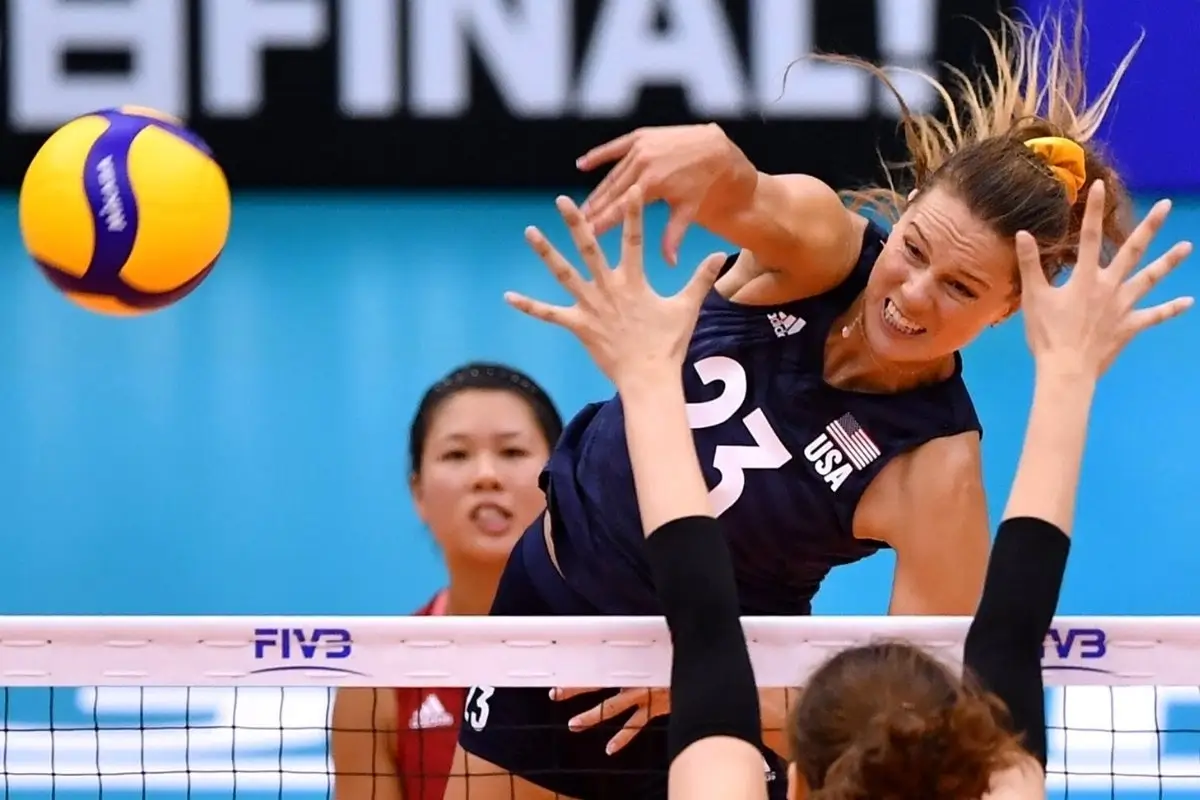Last Updated: January 16, 2024
Balancing a blend of athleticism, skill and strategic thinking, outside hitters are pivotal in both offense and defense.
This position requires a comprehensive skill set that includes proficiency in hitting, passing and the ability to read the defense effectively. An outside hitter’s versatility is key as they are often called upon to execute a wide range of plays under various game situations.
There is more to hitting than just power. An outside hitter must be able to hit with precision and at the right time. Making the right decision quickly based on the counter team’s defense is also important to win.

Passing should be done with precision and seamlessly from defense to offense. An outside hitter should be able to think analytically (with speed), so that he can predict the next move and plan the counter accordingly.
Below are some drills that are designed to develop and sharpen these skills so that an outside hitter is able to perform well.
Training Drills to Elevate Your Outside Hitter Skills
1. Transition Footwork and Spike Timing
Practicing this will help the hitter to skilfully move with speed from a position of defense to attack. When a hitter masters the transition footwork and spike timing, they will be able to change the team’s approach and follow the opponent’s location and defensive formation.
When a hitter repeatedly hits the back corners with force inside the court, the outcome is that of two advantages:
- Improved precision and power strikes
- Hitter can manipulate the court coverage of the counter team
2. Handling Poor Passes
The truth is that no matter how well-prepared a team is, sometimes the sets play havoc. By practicing to handle poor passes an outside hitter learns to convert a weak pass into high and arcing release strikes. The key here is to learn how to jump the right way and hit at the right time.
By learning this skill a hitter can be an opponent’s worst nightmare.
3. Enhancing Back Row Attack
If an outside hitter is skilled on many levels, even the back row fears them. This skill focuses on the backcourt’s last two feet so that the hitter can level attacks on the back row whenever necessary.
The key is to diversify the team’s attacks so that the defense finds it hard to predict their next moves. Simply by avoiding middle hits, imagine keeping an entire opposing team in the dark and making clumsy moves because they cannot figure out the other team’s strategy.
4. Block Tooling Techniques
When facing blockers, relying solely on power may not always be enough. This drill focuses on training outside hitters in the art of “tooling” the block. By learning to hit off parts of the block and aiming high off the hands, hitters develop strategies to outsmart the block and turn the opponents defense into an advantage for their team.
This technique proves valuable in situations where traditional spikes may have a lower chance of success.
5. Fast Transition from Blocking to Spiking
Being able to quickly transition from a defensive block to an offensive spike is significant. This drill aims to enhance a player’s agility and preparedness.
The outside hitter begins with a blocking jump at the net and then swiftly moves back into position for a spike. The focus lies on footwork and reacting instantaneously to changes in the game dynamics.
Mastering the ability to effectively swing at the ball when it isn’t perfectly set up can catch the opposing defense off guard and this can result in successful spikes.
6. Precision in Passing
Efficient passing forms the foundation of a volleyball offense. This particular exercise aims to improve the skill in delivering accurate passes to the setter. It involves a series of rapid passes, which puts pressure on the hitter to maintain focus and precision.
By simulating real game scenarios this drill prepares hitters to handle tough moments during matches ensuring that their passes result in sets and powerful attacks.
7. Advanced Hitting Techniques
In this drill hitters face the challenge of dealing with two blockers and finding ways to maneuver the ball past them. It’s not about relying on power; strategy also comes into play. The hitter learns how to use the blockers positions against them or aim for areas of the court.
This exercise helps cultivate an ability to analyze the block and make split second decisions, which are critical for scoring points in challenging situations.
Read more on advanced hitting techniques here
8. Reading and Adapting to the Defense
Being able to read the defense is a key skill for any hitter. This drill focuses on honing a player’s ability to observe and adapt to defender’s positions on the court. The hitter must adjust their tipping strategy based on whether defenders are near or far from the net.
It helps the hitter become more observant and strategic, enhancing their capability to exploit weaknesses in the team’s defense.
9. Mastering Offensive and Defensive Transition
The offense-defense transition drill focuses on transitioning between attacking and defending roles. The hitter begins at the net and swiftly switches to defense to dig a ball. Then promptly transitions back to offense for a spike.
This drill is essential for honing a versatility on the court ensuring they are equally effective in both defensive capacities. It emphasizes speed, adaptability and maintaining composure during transitions – skills that are invaluable in high pressure game scenarios.
Recommended read: The Key Attributes of a Standout Outside Hitter in 2024
Conclusion
These exercises encompass aspects such as refining hitting lines, improving footwork during transitions, perfecting block techniques and executing defensive moves. Each drill has a purpose of boosting your skills and elevating your performance during gameplay.
Regular and consistent practice is key to succeeding with these drills. Developing muscle memory is important for maintaining consistency as it helps your body learn how to instinctively respond in game situations.
